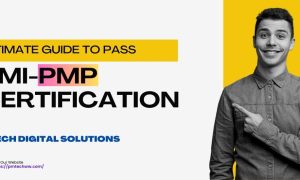Looking for the ideal project planner? It’s all about finding the tool that not only organizes tasks and project scheduling but propels your team towards successful project completion. In this article, we dissect the vital features, cost implications, and varying scales of today’s leading project planning tools to help you pinpoint the perfect match for your workflow—without the fluff. Be sure to check the features and details of the project planners discussed.
Key Takeaways
-
Choosing the right project planner hinges on evaluating the scale and complexity of projects, essential features for efficient task and resource allocation management, and budget considerations, ensuring that the planner can scale and integrate with various roles, tasks, and resources.
-
An effective project plan requires clear objectives, an organized system for managing tasks and deadlines, and robust tracking of progress and time management, utilizing tools like Gann charts, built-in reports, and dynamic tracking for real-time insights and better decision-making.
-
Modern project planners should offer digital and physical options, user-friendly interfaces, eco-conscious materials, customizable functionalities, seamless integration with other tools, and adaptability to workflow changes and project management evolution.
Understanding Your Project Planning Needs
When it comes to managing projects, having the right tools and resources is crucial for success. A project planner is an essential tool for project managers, designers, writers, and individuals who prefer to keep tasks and plans organized. Before choosing a project planner, it’s essential to understand your project planning needs. Consider the size and complexity of your projects, the number of team members involved, and the level of detail required. Do you need a planner that can help you track progress, assign tasks, and set deadlines? Or do you prefer a more straightforward approach to planning and organizing your projects?
Choosing the Perfect Project Planner
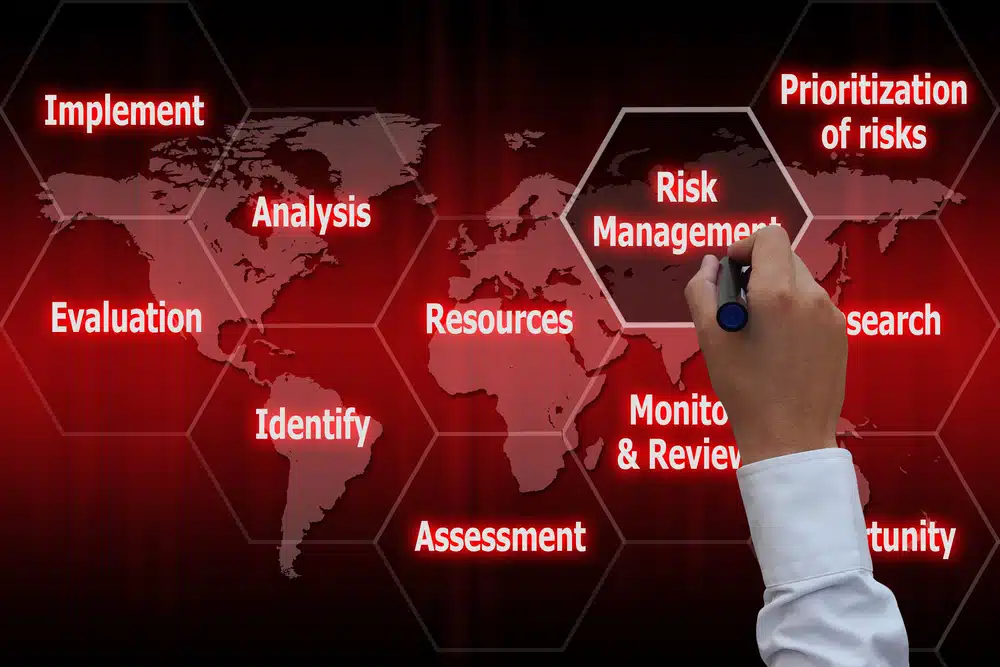
Choosing the right project planner is critical, much like appointing a trusted captain to steer your ship amidst the unpredictable waters of deadlines, tasks, and teamwork. Project managers know well the comfort that comes with having an efficient planner at their disposal to orchestinate every moving part. Despite being spoilt for choice in a marketplace brimming with options—each claiming to be the ultimate solution for project challenges—the following have emerged as popular choices among planning tools:
Trello
Asana
Monday.com
Jira
Microsoft Project.
Given that these platforms each boast distinctive features and advantages, it’s crucial to assess them against the particular requirements of your own projects.
The question remains: how can you sift through this abundance and select one that seems tailor-made for your needs?
Scale of Your Projects
Take into account the magnitude of your projects. Are they more akin to a small boat or a massive naval vessel? The complexity and breadth of your tasks will depend on each other and determine the kind of planner necessary for success. Smaller teams with simple duties might find that a basic Planner app is adequate, but expansive, multifaceted projects require an advanced system capable of managing varied needs and delivering detailed plans.
It’s not just about how many tasks there are. It’s also essential to consider roles, responsibilities, resource allocation, and available resources when choosing a planner. Your chosen tool must effortlessly transition from handling basic checklists to supporting complex operations at an organizational level.
Essential Features for Task Management
The essence of managing tasks efficiently is found in functionalities that simplify your daily routine by paying attention to details and time management. Being able to distinguish urgent tasks from those less critical is crucial. Your planner needs to enable you to pinpoint pivotal tasks while recognizing which ones can be relegated for later attention. It should provide an overarching perspective on the interrelations between tasks so that you can foresee potential obstacles and adeptly steer clear.
A project lacking these essential tools can be likened to a vessel bereft of its navigational instrument—a compass—left at the mercy of unpredictable shifts and changes.
Price Considerations
Finally, it’s crucial to address the monetary considerations. Consider your budget as a beacon steering you clear of fiscal disaster. Creating a financial plan involves looking beyond just the purchase price—it encompasses the complete cost from acquisition through upkeep and necessary upgrades over time. You need to meticulously evaluate each prospective outlay so that the planner meets expectations without causing unexpected expenditure excesses. As an experienced navigator would, plot your financial route with full awareness of all costs involved.
Types of Project Planners
There are various types of project planners available, each with its own unique features and benefits. Here are some common types of project planners:
-
Digital Project Planners: These are software-based planners that can be accessed online or through mobile apps. Examples include Microsoft Project, Trello, and Asana. Digital project planners offer flexibility, collaboration features, and automatic updates.
-
Paper-Based Project Planners: These are physical notebooks or binders that provide a tactile approach to planning and organizing projects. Examples include the Large Project Planner, Moleskine PRO Project Planner, and Meeting Notebook for Work Organization. Paper-based project planners offer a more traditional approach to planning and can be useful for brainstorming and note-taking.
-
Hybrid Project Planners: These combine the benefits of digital and paper-based planners. Examples include planners with digital templates and paper-based notebooks with online syncing capabilities. Hybrid project planners offer flexibility and convenience.
-
Specialized Project Planners: These are designed for specific industries or projects, such as construction, event planning, or software development. Examples include project planners with Gantt charts, Kanban boards, or Agile templates. Specialized project planners offer tailored features and formats for specific project needs.
When choosing a project planner, consider your project planning needs, personal preferences, and the level of complexity involved. By selecting the right type of project planner, you can streamline your project management process, increase productivity, and achieve your goals.
The Anatomy of an Effective Project Plan
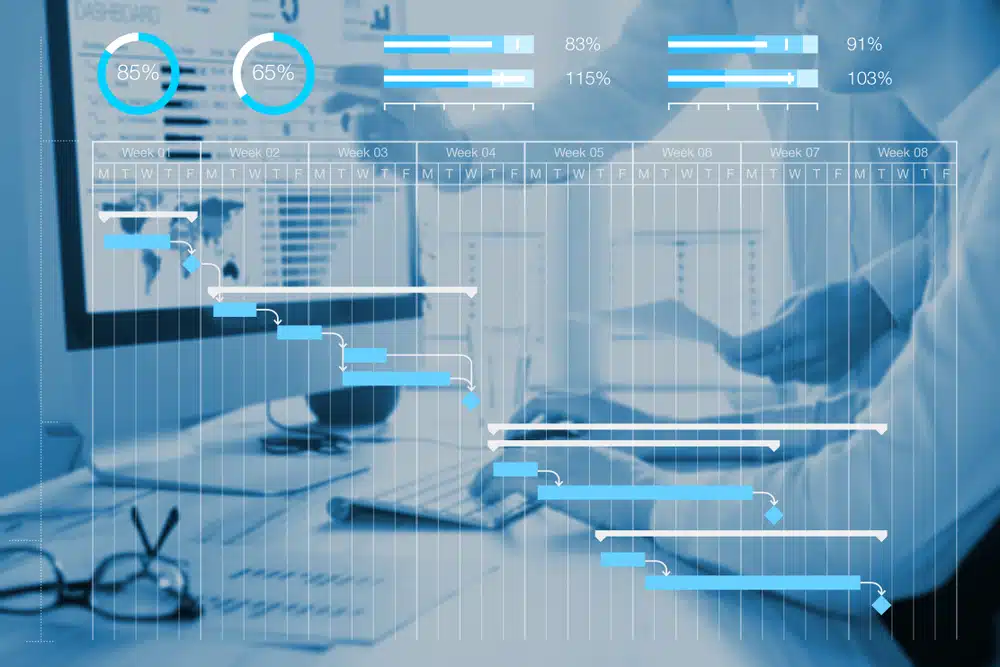
After choosing the perfect planner, embark on constructing a project plan that serves as more than merely a checklist of tasks. It is an essential navigational chart steering your team from the starting point to finalization. This blueprint holds no value unless it encompasses distinct goals, an orderly arrangement of assignments, and a dependable mechanism for monitoring advancement and resource allocation along the way in the broader context.
Setting Clear Objectives
Clear goals serve as navigational stars, outlining the breadth of your project and identifying the desired results. These targets need to be concise and well-defined like a sailor’s sharp blade—specific, quantifiable, with clear time constraints. They act as robust supports for your aims, which are more expansive in nature but provide guidance nonetheless.
It falls upon the project manager to synchronize these precise objectives with all involved parties while establishing their trackability by employing key performance indicators (KPIs) and time management.
Organizing Tasks and Deadlines
Delving into the method of arranging tasks and timelines, including project scheduling, is next on our agenda. Without the ability to streamline this aspect, a project planner loses its effectiveness. Here’s your guide:
Start by dividing your project into manageable, smaller tasks.
Account for task interdependencies and organize them into specific stages or key milestones.
Juxtapose these tasks with time using tools like Gantt charts to highlight any overlapping duties while evenly distributing responsibilities.
Employing a planner allows you to choreograph the assignment of tasks and the establishment of deadlines in an orderly manner, making sure each participant understands their role and the rhythm required for execution. It’s as much about judiciously managing time as it is about handling tasks—this avoids overcommitting resources and encountering bottlenecks that can knock your project off its intended schedule.
Monitoring Progress
Now, let’s turn our attention to the essence of project management—oversight of progress and time management. A reliable project planner should act as your lookout, enabling you to keep tabs on how your projects are advancing in real time. Key functionalities that can aid in this oversight include:
Gantt charts for a visual representation of your project timelines and tasks
Comprehensive built-in reports providing detailed analyses on the well-being of your projects
Real-time dynamic tracking features that support informed decision-making based upon current data
This lively element inherent to modern project tracking software gives it an upper hand over outdated static spreadsheets by improving how you monitor and direct your projects.
Monitoring extends beyond mere task observation. It encompasses vigilance over budgets and resources too, giving you a complete panoramic perspective on where your projects stand. The critical piece is time-tracking abilities that enable assessment of team performance while highlighting which projects necessitate closer scrutiny.
Innovative Planners for Modern Project Managers
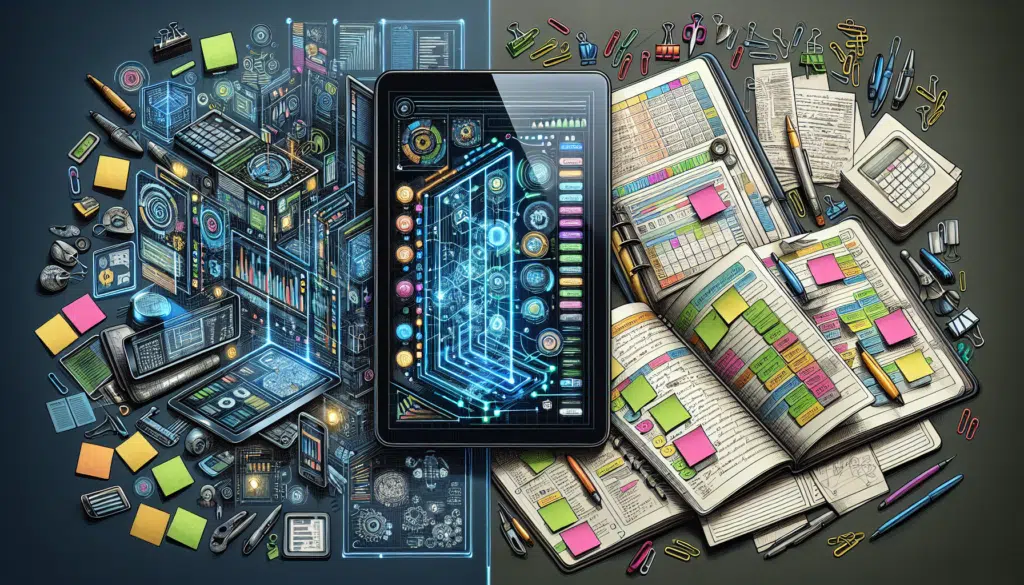
In the shift towards the digital era, project managers need planning tools that are not only cutting-edge project scheduling software but also instinctively easy to use. These tools should be designed with a user-centric approach and provide features aligned with our environmentally conscious culture. They must present an array of choices that span across both electronic and paper-based formats to accommodate different tastes.
Digital vs. Physical Planners
The argument about whether to opt for a digital or physical planner can be likened to the choice between using a compass and employing GPS technology. Digital planners boast an array of features such as alerts, customizable options, and seamless access to your information via cloud storage. With platforms like Microsoft Planner at your disposal, you have access to an extensive selection of templates and organizational views that cater directly to user preferences. Their capacity for app integration is vast—take Wrike’s more than 400 integrations—for comprehensive project management capabilities while being environmentally friendly by cutting down on paper and ink consumption.
Conversely, traditional physical planners provide a sensory experience unbound by the need for electricity or internet connectivity, which enables consistent productivity and resource allocation without interruption.
User-Friendly Formats
Intuitive formats serve as essential support to maintain your project management above the waves of complexity. User-friendly interfaces enable simple handling of tasks, time management, and visual aids such as Kanban boards and Gantt charts offer a comprehensive overview of your project’s scope. These methods transcend mere visual appeal. They are pivotal for lucidity, guaranteeing that all team members can swiftly ascertain and comprehend the progress of various tasks with just a cursory look.
Eco-Conscious Choices
In the modern age, adopting an environmentally friendly stance is not only valued but also anticipated. Project planners such as the Moleskine PRO Project Planner are designed to fulfill both our need for organization and our responsibility towards Earth’s well-being. Opting for recyclable-material-made planners with endorsements from respected entities demonstrates our dedication to preserving the environment.
Tailoring Your Planner to Your Workflow

To guarantee a perfect match, it’s critical to thoroughly review your team’s existing processes and project scheduling and engage with your team members when selecting a planner. Choose one that offers features that align well with both individual tastes and the group’s overall work style, as using an ill-fitting planning tool can be as ineffective as trying to fit a square peg into a round hole.
Customization Options
Personalization is a key ally, presenting an array of choices including elastic bands, tabs, and movable pages to ensure your planner remains flexible. Equipped with this wide range of capabilities, like the stretchiness of an elastic band, your planner can transform into a dynamic record that evolves in sync with the changing demands and resource allocation of your project.
Integration with Other Tools
A planner adept at integrating with various digital tools and applications, including project scheduling software, can be incredibly valuable, akin to being as precious as gold. Its ability to fluidly connect with everything from collaborative team platforms to customer relationship management (CRM) systems transforms it into the central axis of your project’s operations. Such a planner not only facilitates robust workflow automation but also guarantees conformity with the IT policies within your organization, thereby expanding possibilities for teamwork and productivity efficiency.
Adapting to Changes
A planner of high calibre must exhibit the same level of adaptability and time management as the team that utilizes it, given that change is an inevitable part of managing projects. Having the ability to adjust workflows seamlessly isn’t simply a beneficial feature. Rather, it acts as a critical support system to keep progress on track during challenging times.
It is essential for project aims to be in sync with organizational targets, underscoring how vital every member’s role is within the team.
Staying Ahead with Advanced Planning Techniques
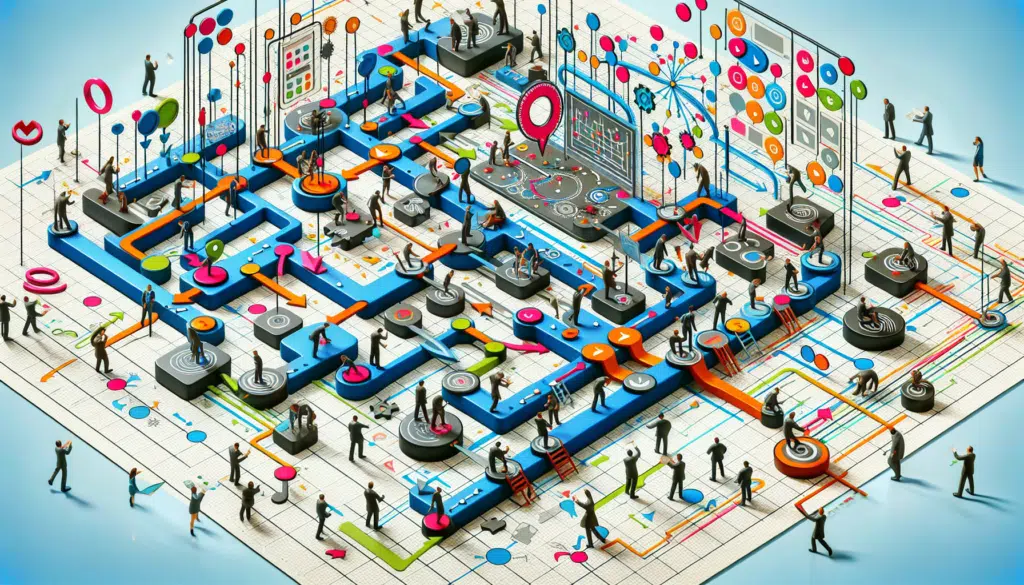
For successful management of upcoming projects, it’s essential to possess sophisticated planning methods, including project scheduling. These include strategies for establishing priorities, functions that support teamwork, and abilities to monitor time spent on tasks—all of which guide projects into new realms of efficiency and achievement.
Prioritization Strategies
Utilizing methods like the Eisenhower matrix for time management alongside gauging the effort required can be crucial for shifting from a state of struggle to one of success. By sorting tasks with an eye toward their urgency and significance, teams are better able to concentrate on actions that really advance their goals.
By assessing how much work is involved in various tasks, it’s possible to distribute resources optimally, guaranteeing key benchmarks are achieved promptly without any setbacks.
Collaborative Features
Collaboration is frequently the driving force behind any project’s success. By integrating functionalities such as file sharing, instant messaging, and explicit role allocation into your planner, you can enhance communication efficiency and significantly boost the dynamics within a team. Such tools create an atmosphere where tasks are coordinated harmoniously, resulting in a crescendo of collective productivity and resource allocation.
Time-Tracking Capabilities
Within the domain of time management, AI-enhanced capabilities for tracking time and project scheduling software serve as a navigational aid, ensuring you reach your desired end point punctually. By streamlining routine tasks and setting definitive objectives, AI optimizes how resources are distributed and schedules for projects are arranged, guaranteeing that timelines are met with precision.
Summary
In traversing the intricacies of contemporary project management and project scheduling, it is crucial to select and customize an appropriate project planner. Recognizing the magnitude of our projects, focusing on critical task management functionalities, and weighing price considerations steers us towards a path of productivity and proficiency. As we witness the development of planning tools that are innovative, user-oriented, and environmentally mindful, customization options along with seamless integration become instrumental in adapting these planners to our distinctive processes.
Embracing advanced methods such as prioritization techniques for tasks and fostering collaboration among team members versus individual efforts only helps facilitate communication better, thus improving teamwork, and meticulously tracking time helps illuminate our journey toward successful outcomes. Assume command. Adopt these methodologies to navigate your projects confidently into what lies ahead.
Frequently Asked Questions
What should I consider when choosing a project planner for a small team?
When selecting a project planner suitable for a small group, we recommend choosing an application that provides efficient task handling and resource allocation while avoiding excessive functionalities. The Planner app is recognized for its straightforwardness and efficiency in this regard.
How do you determine the essential features needed in a project planner?
In establishing the critical elements that should be included in a project planner, it’s important to hone in on capabilities such as prioritizing tasks, time management, monitoring progress, and scrutinizing task interdependencies. These features are vital for comprehending both the needs of the project and possible obstacles. Doing so promotes effective management of projects while avoiding unnecessary complexity.
Can digital planners integrate with other apps and how does this benefit project management?
Certainly, digital planners possess the capability to synchronize with numerous applications, including project scheduling software, facilitating an uninterrupted and collaborative workflow automation that greatly enhances both productivity and teamwork.
How can a project planner be customized to fit my workflow?
By incorporating features such as resource allocation, repositionable pages, tabs, and elastic bands into a project planner, you have the flexibility to tailor the organization of information according to your team’s evolving requirements and adapt seamlessly to any changes within your project workflow.
Why is time-tracking an important feature in project management tools?
Monitoring the time spent on tasks and time management within projects is crucial for project management software as it confirms that tasks meet deadlines, aids in assessing team member workload, pinpoints which projects require immediate focus, and enhances overall time allocation strategies.
The incorporation of AI technology into these tools has the potential to streamline this monitoring process significantly.




